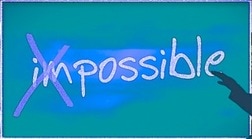 Carl Rogers, one of the founders of humanistic psychology, said, “The good life is a process, not a state of being. It is a direction not a destination.“ The term ‘the good life’ is used in positive psychology to talk about what makes for a fulfilling and happy life. Research shows that the good life isn’t a thing: it’s not a vacation destination, an iPhone, or owning a house. While things can bring us happiness, we quickly adapt to the happiness they bring, and they become stale. When that happens, we need more of it to keep getting happy. Think about it: if you’re planning your nextgetaway the second you get home from a vacation, where did all that happiness go?  So what makes for lasting happiness? Research shows that one way to have deeper, more lasting happiness is to engage in meaningful activities. Activities become meaningful when they involve your deeper values. When you are acting in line with your values, you tend to feel more in sync with yourself and what is important to you. Do you know what’s most meaningful for you? Here are a few resources to help you figure it out: 1) You can start simply by asking yourself what’s most important to you in your life. There’s a great exercise for that here: http://www.thehappinesstrap.com/upimages/Values_Questionnaire.pdf 2) Franklin Covey offers a free mission builder website – it’s excellent and helps you dig a little deeper into what is important to you. You can create one personally or for you family. You can find that here. 3) You can take the free Values In Action Survey that will rank you on 26 strengths (known as values in action). Click here for the survey. You can use your top 5 to start exploring how those values show up in your life and how to involve them to create more meaning for yourself. All of these activities will help you get to know what you value better. I hope that you will use them to start a conversation around how you can have MORE of what you value in all areas of your life. You might even do it with your partner or friend – it can be powerful sharing it with another. If you would like more information on how to apply the tools above in your life, simply hit reply and we can set up a free consultation to talk about it. Wishing You All the Best, Jen
1 Comment
Nike says, “Just do it,” but I say, do not “just do it” if that isn’t working for you and here’s why…  Let’s take something simple, maybe you want to be on your phone less because it stresses you out (all those texts, emails, FB notifications, tweets...) In your head you think, I’ll ‘just do that’, I’ll stop checking my phone after 6 when I leave work. And then maybe you do it for a few days, maybe not, but sooner or later it’s 7 and you’re back on your phone (and feeling stressed out). Most folks have experienced this with some goal in our life…. It’s helpful to know that we go through stages when creating change in our lives. Natural changers go through them without thinking about it. So here’s a recap in case it helps you get off your own back, create some compassion, and maybe a different plan than, “Just Do It!” Here are the stages:  1) Not being sure we want to change 2) Wanting to change but having no plan 3) Creating a plan but not yet taking action 4) Taking action but it’s not yet a habit 5) The action becomes a part of our lives and requires less effort 6) (We may relapse to an old behavior occasionally and need to figure out what happened) The quickest way to sabotage change in your life is to make yourself get into action when you aren’t ready. This is where ‘Just Do It’ becomes your UNDOING. So let’s say you want to be on your phone less because it adds to your stress and you would like to relax in the evenings. Well, if you’re not able to do it right off the bat, it’s easy to get down on yourself. “Man, what’s wrong with me? Just stay off the phone, what’s so hard?” And then what happens is we make ourselves feel WORSE and we still don’t change. Here’s another route: have some compassion for yourself and apply the stages I just talked about. Here’s what it might look like using the cell phone example. 1) Examine why you want to change: why do you want to stay off the phone and why do you want to use it in the evenings? The pros need to outweigh the cons before change is really going to stick. It can be helpful to make a list of the pros (why you want the change) and the cons (what will happen if you don’t.) You might have to get more info and do some thinking before the pros are big enough to make change worthwhile.  2) Create a plan: maybe you need to create a realistic plan BEFORE you do it. For example, maybe you want to stay off the phone, but you have important calls you need to be available for. So you decide to turn off all your notifications, but leave your ringer on. Perhaps you decide to put your phone in a place where you can hear it, but you can’t get to it easily. There are many creative ideas here. You may need to brainstorm ideas and create a REALISTIC plan before you are going to take action. 3) Take Action: It can be helpful to really define EXACTLY WHAT you’re going to do and make sure it supports your goal (less stress). This will help you take specific action that gets you to YOUR goal. Take that plan and break it down into specific steps. I used an easy example here. But this can be applied to ANY change you want to see in your life…. Relationships, job happiness, job transitions, building your business, health goals, and on and on. If you would like some help applying this to a goal in your life, simply click reply and let’s chat! Maybe there’s a change you’ve been wrestling with lately? I would be happy to offer you a free strategy session on how to put this into play in your life. Please share this anyone else who is struggling with a goal! All the Best, Jen |
Tips and resources to help you on your path.
Sign up to receive this in your inbox: Archives
October 2016
Categories |

 RSS Feed
RSS Feed
